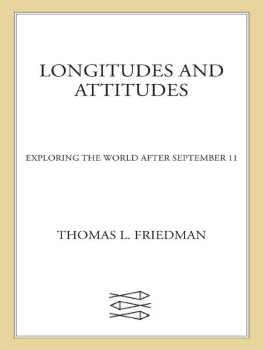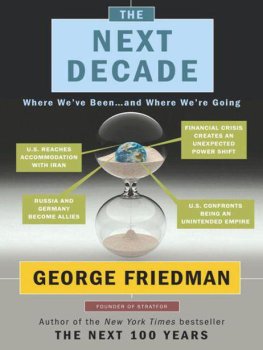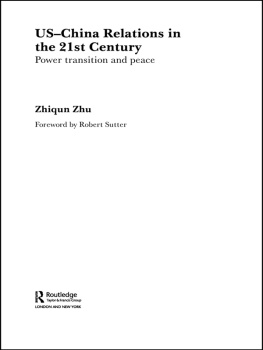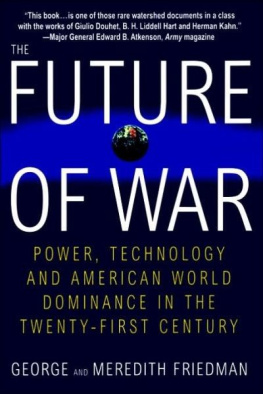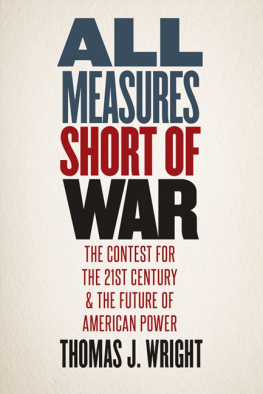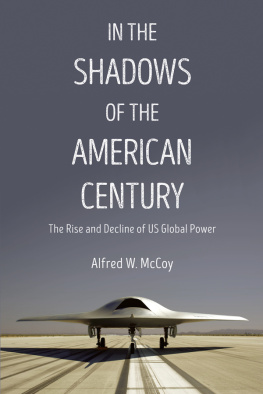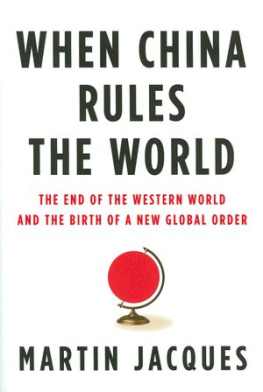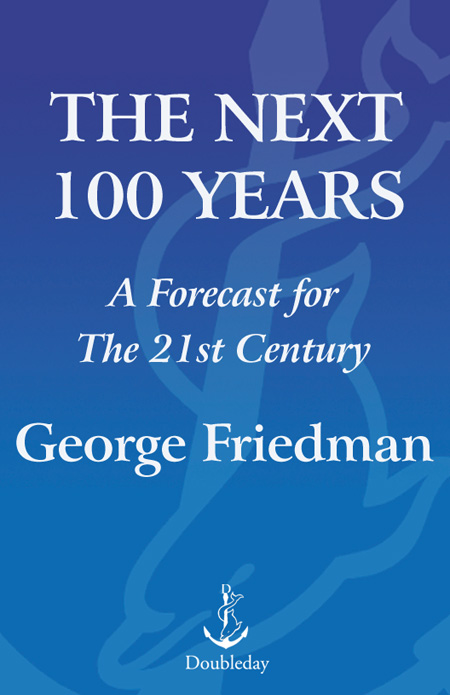To him who looks upon the world rationally, the world in turn presents a rational aspect. The relation is mutual.
GEORGE W. F. HEGEL
Author's Note
I have no crystal ball. I do, however, have a method that has served me well, imperfect though it might be, in understanding the past and anticipating the future. Underneath the disorder of history, my task is to try to see the orderand to anticipate what events, trends, and technology that order will bring forth. Forecasting a hundred years ahead may appear to be a frivolous activity, but, as I hope you will see, it is a rational, feasible process, and it is hardly frivolous. I will have grandchildren in the not-distant future, and some of them will surely be alive in the twenty-second century. That thought makes all of this very real.
In this book, I am trying to transmit a sense of the future. I will, of course, get many details wrong. But the goal is to identify the major tendenciesgeopolitical, technological, demographic, cultural, military in their broadest sense, and to define the major events that might take place. I will be satisfied if I explain something about how the world works today, and how that, in turn, defines how it will work in the future. And I will be delighted if my grandchildren, glancing at this book in 2100, have reason to say, Not half bad.
OVERTURE
AN INTRODUCTION TO THE AMERICAN AGE
I magine that you were alive in the summer of 1900, living in London, then the capital of the world. Europe ruled the Eastern Hemisphere. There was hardly a place that, if not ruled directly, was not indirectly controlled from a European capital. Europe was at peace and enjoying unprecedented prosperity. Indeed, European interdependence due to trade and investment was so great that serious people were claiming that war had become impossibleand if not impossible, would end within weeks of beginningbecause global financial markets couldn't withstand the strain. The future seemed fixed: a peaceful, prosperous Europe would rule the world.
Imagine yourself now in the summer of 1920. Europe had been torn apart by an agonizing war. The continent was in tatters. The Austro-Hun gar ian, Russian, German, and Ottoman empires were gone and millions had died in a war that lasted for years. The war ended when an American army of a million men intervenedan army that came and then just as quickly left. Communism dominated Russia, but it was not clear that it could survive. Countries that had been on the periphery of European power, like the United States and Japan, suddenly emerged as great powers. But one thing was certainthe peace treaty that had been imposed on Germany guaranteed that it would not soon reemerge.
Imagine the summer of 1940. Germany had not only reemerged but conquered France and dominated Europe. Communism had survived and the Soviet Union now was allied with Nazi Germany. Great Britain alone stood against Germany, and from the point of view of most reasonable people, the war was over. If there was not to be a thousand-year Reich, then certainly Europe's fate had been decided for a century. Germany would dominate Europe and inherit its empire.
Imagine now the summer of 1960. Germany had been crushed in the war, defeated less than five years later. Europe was occupied, split down the middle by the United States and the Soviet Union. The European empires were collapsing, and the United States and Soviet Union were competing over who would be their heir. The United States had the Soviet Union surrounded and, with an overwhelming arsenal of nuclear weapons, could annihilate it in hours. The United States had emerged as the global superpower. It dominated all of the world's oceans, and with its nuclear force could dictate terms to anyone in the world. Stalemate was the best the Soviets could hope forunless the Soviets invaded Germany and conquered Europe. That was the war everyone was preparing for. And in the back of everyone's mind, the Maoist Chinese, seen as fanatical, were the other danger.
Now imagine the summer of 1980. The United States had been defeated in a seven-year warnot by the Soviet Union, but by communist North Vietnam. The nation was seen, and saw itself, as being in retreat. Expelled from Vietnam, it was then expelled from Iran as well, where the oil fields, which it no longer controlled, seemed about to fall into the hands of the Soviet Union. To contain the Soviet Union, the United States had formed an alliance with Maoist Chinathe American president and the Chinese chairman holding an amiable meeting in Beijing. Only this alliance seemed able to contain the powerful Soviet Union, which appeared to be surging.
Imagine now the summer of 2000. The Soviet Union had completely collapsed. China was still communist in name but had become capitalist in practice. NATO had advanced into Eastern Europe and even into the former Soviet Union. The world was prosperous and peaceful. Everyone knew that geopolitical considerations had become secondary to economic considerations, and the only problems were regional ones in basket cases like Haiti or Kosovo.
Then came September 11, 2001, and the world turned on its head again.




